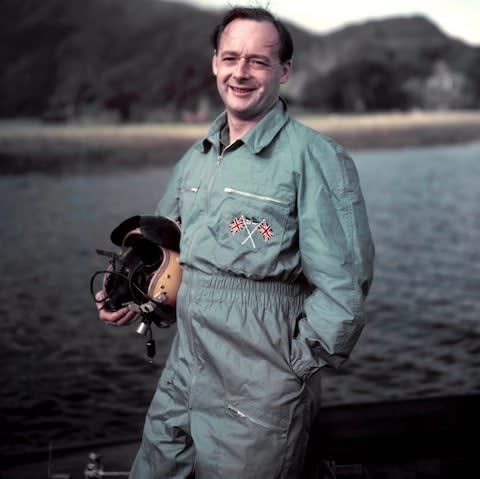Row over Bluebird legacy splits Donald Campbell's admirers

A bitter row over the future of Bluebird, which claimed the life of speed record breaker Donald Campbell when it crashed on Coniston Water in 1967, has split those charged with preserving his enduring legacy.
While some want to put the newly-restored hydrofoil on permanent display at a museum in the village where Campbell is buried, others want the craft to tour the world as a way of inspiring future generations.
Now Campbell's daughter has stepped into the dispute, endorsing the ambition of the volunteers who restored Bluebird to show her off at various sites around Britain and the rest of the world.
Her call comes despite having gifted the wreck of the Bluebird K7 to the Ruskin Museum at Coniston village, which plans to display her in a purpose-built wing of the building.
While the Ruskin Museum wants the craft on permanent display, the Bluebird Project Team volunteers who worked tirelessly to restore the craft after she was recovered from the waters of the lake say she should be used in periodic displays on water, where her engineering prowess can be showed off to its full effect.
Ms Campbell - who was a teenager when her father was killed attempting to smash through the 300 mph barrier - has now said the hydrofoil should be seen by as many people as possible rather than being kept in a museum as a relic.

She told The Telegraph: “It would be fantastic to take her around the world and show her off. That would be the proper way of perpetuating my father’s achievements - to inspire people to set their own records.
“If children could see Bluebird in all her magnificence it might inspire them to become engineers, scientists, pilots and record setters and that would be wonderful.”
Ms Campbell had initially backed the museum plan, but changed her mind after seeing the restored Bluebird unveiled for the first time at Loch Fad, on the Isle of Bute in Scotland, last August.
“When I saw Bluebird running at Bute I realised she is a living, breathing thing and it would be wrong to stick her away in a museum,” she said. “I used to think she should be kept at Coniston, which of course is her spiritual home and it’s where my father is buried in the graveyard there.
“But the public will not be able to see her in very great numbers there. She needs to be shown off at events around the world.”
Ms Campbell was just 17 when she was told her father’s K7 had crashed and sunk while attempting to set a daring new speed record, receiving the news of his death at the age of 45 while working abroad at a ski resort.
The accident came as Campbell was attempting to beat his own water speed record of 276.33mph set three years earlier.
The badly damaged craft lay on the bed of Coniston Water until it was raised in 2001 by Bill Smith, an engineer who led the Bluebird Project Team’s restoration of Bluebird at his workshop in Newcastle Upon Tyne.

Their plan had been to take the hydrofoil back onto Coniston Water in July, in a fitting tribute to Campbell.
But last month the outing was called off after what the Bluebird Event Working Group - made up of local villagers, business representatives and councillors - described as “unforeseen circumstances”. It is understood the group felt they needed more time to plan the event properly.
Mr Smith’s ambition is to eventually display Bluebird at some of the sites of Campbell’s greatest achievements - such as Lake Mead in Nevada, where K7 set a record of 216 mph in 1955.
He said: “It’s a no brainer Bluebird should be seen by as many people as possible rather than being stuck behind closed doors. She belongs on the water, that’s when she comes alive.”
Ms Campbell, who in 1990 broke her own World Water Speed Record in New Zealand - achieving 166 mph in a three point hydroplane - now fears the matter could end up in the courts and has called for the two groups to sit down together to resolve the dispute.
“They need to talk to each other and reach a compromise,” she said. “But I’m afraid they seem miles apart at the moment.”
Additional reporting by Jen Bowey

 Yahoo News
Yahoo News 
